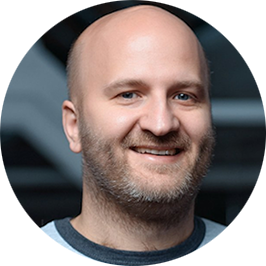Get started with GraphQL in .NET using C#
Created at Facebook in 2012 and released as open-source software in 2015, GraphQL has proven that it is here to stay. GraphQL is one of the "Big Three" when it comes to building modern APIs (alongside REST and gRPC), and it is the approach of choice for many big companies like GitHub, Shopify and thousands more. GraphQL solves many problems that developers encounter when building traditional REST APIs, and it does it with fashion, sporting an elegant read and write approach as well as a unique way to subscribe to data changes. In this 7-and-a-half-hour course, Michael Staib, a GraphQL steering committee member and creator of the popular GraphQL library HotChocolate, will assume you have no knowledge on this topic and take you to a very decent level where you'll be able to build GraphQL .NET applications using C#.
Curriculum
Welcome
What will you learn in this course?
Who is the course for and prerequisites
Why GraphQL?
Lets have a look at GraphQL
GraphQL operation structure explained
A quick look at the GraphQL transport protocols
Lets create our first GraphQL server!
The annotation-based schema building approach
An exploration of the GraphQL type system
GraphQL Object Types
GraphQL Interface Types
GraphQL Union Types
GraphQL Enum Type
GraphQL Input Objects
GraphQL OneOf Inputs
Getting Started with Entity Framework
Using GraphQL projections with Entity Framework
Field Middleware Explained
Paging in GraphQL
Filtering
Filtering and Sorting
Exploring Schema Building Approaches
Introduction
Building with Type Modules and automatic type registration
Splitting Root Types
Cursor Pagination in a layered architectures
Using type extensions in Hot Chocolate
Introduction to DataLoader
Using DataLoader with nested Paging
Introduction to GraphQL query patterns
The Entity pattern
Working with composite keys
Exposing internal identifiers
GraphQL Errors and Non-Nullability explained
Throwing Custom GraphQL Errors
Using Domain Errors in GraphQL Queries
Introduction to GraphQL mutations
Implementing a basic mutation
Mutation design principals
Mutation conventions
Error patterns for GraphQL mutations
Implementing Patch Mutations
Handling File Uploads with GraphQL
Introduction to GraphQL subscriptions
Implementing a basic subscription
Implementing a basic chat
Keeping state with replayable events
Longruninng Mutations
Introduction
Schema as an artifact
Schema export CLI
What is a GraphQL schema registry?
Setting up the schema registry
Setting up a CI build with the schema registry
Setting up a deployment build with the schema registry
Setting up a client registry
Introduction
Setting up aspire for developer telemetry
Adding Hot Chocolate Telemetry
Add Production Telemetry
Instrumentation Options
Custom Spans
Course Info

Lifetime access
Add to CartAbout the Author

Michael Staib
Michael is a member of the GraphQL technical steering committee, contributing to the GraphQL composite schema specification under the GraphQL Foundation. He is a Microsoft MVP and the author of the Hot Chocolate GraphQL Server for .NET. Michael frequently speaks at conferences and trains professionals in the .NET and GraphQL ecosystems, sharing his expertise and passion for these technologies.
More courses by Michael Staib© 2023 Dometrain. All rights reserved.

